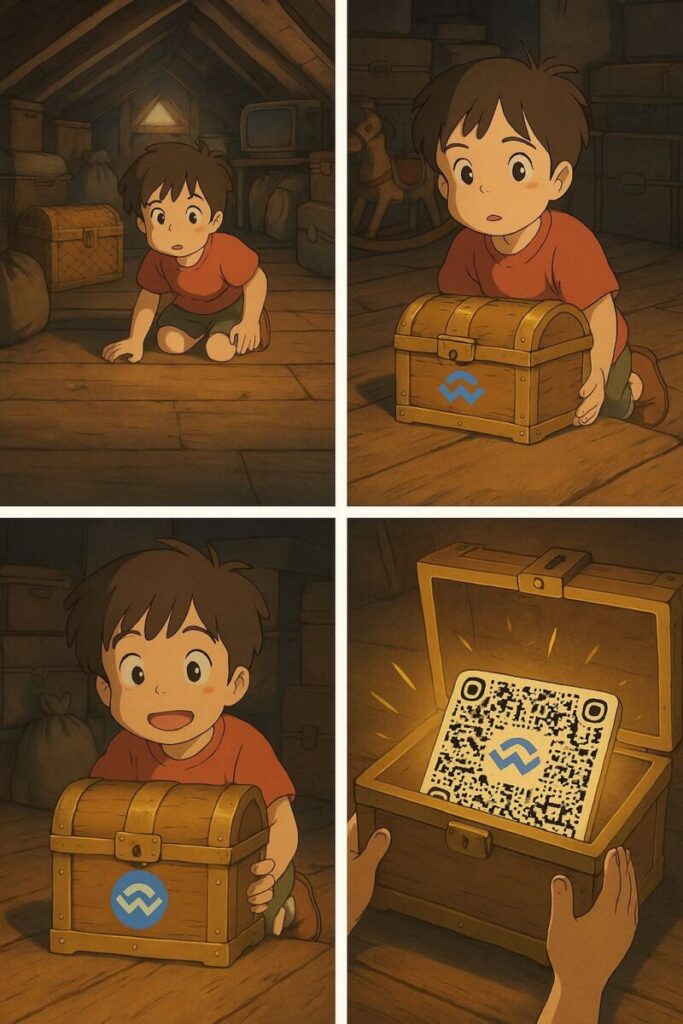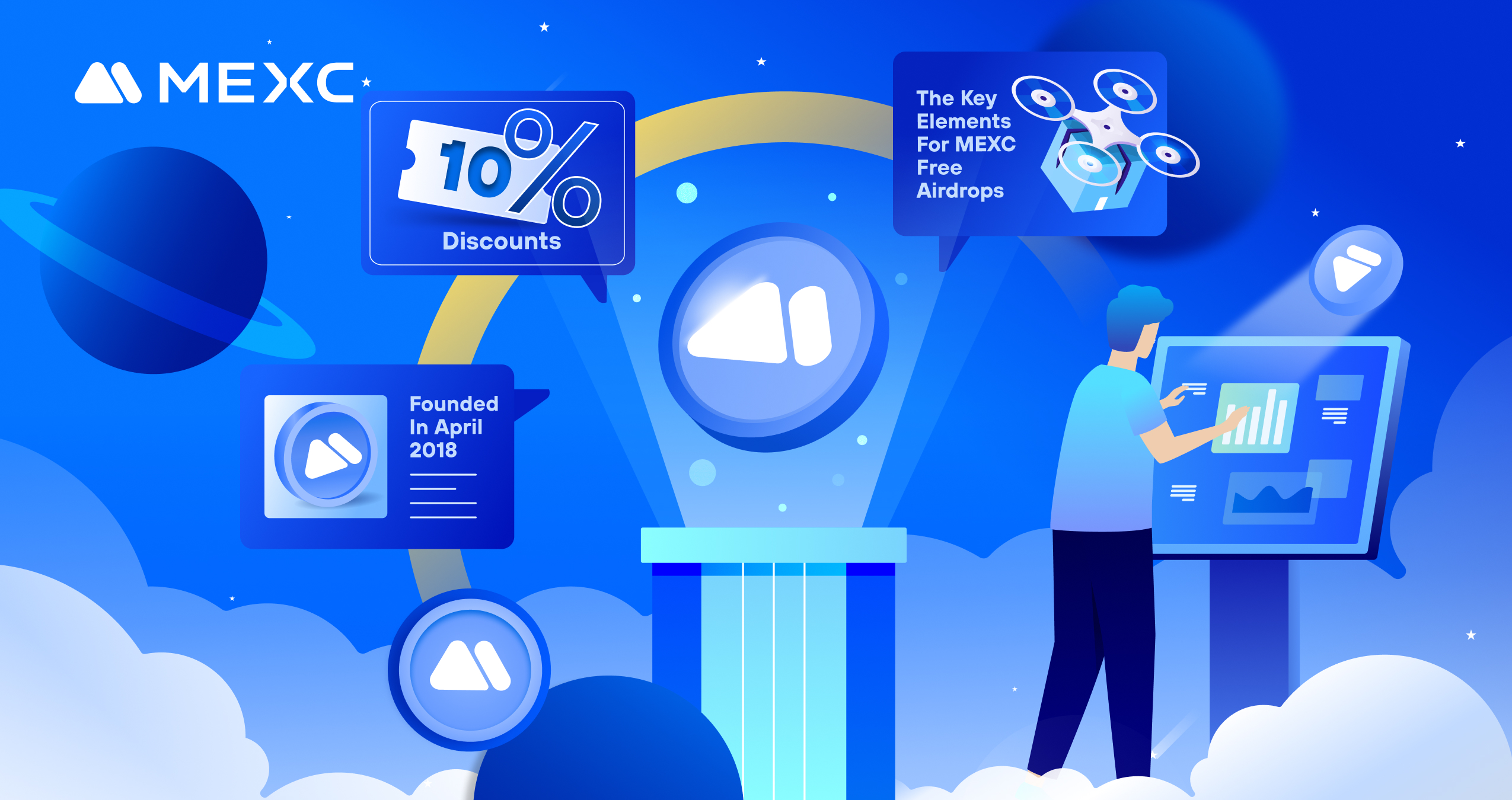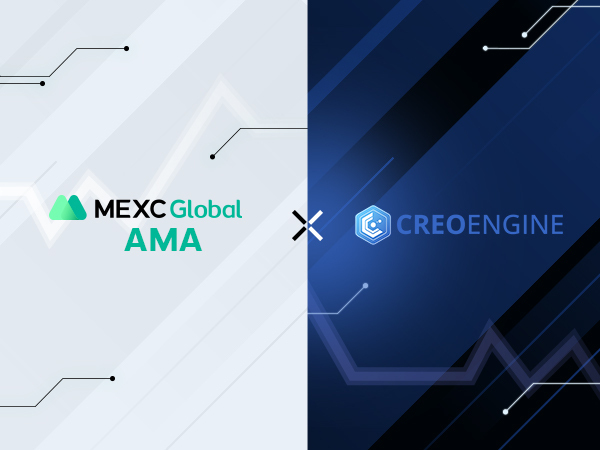
In the cryptocurrency realm, seamless connections between wallets and applications across different chains have always been a challenge. As the key infrastructure connecting wallets and applications, the WalletConnect network has become the industry standard, providing users with secure and convenient cross-chain interoperability solutions. Now, with the launch of its native token WCT, the WalletConnect network is embarking on a new chapter of decentralized governance, further enhancing the on-chain user experience ecosystem.
This article will comprehensively analyze WalletConnect network’s innovative technology, WCT token’s economic model, and its investment value, offering you an in-depth understanding of this core infrastructure project driving Web3 development.
What is WalletConnect? Understanding the Universal Web3 Connection Protocol
WalletConnect is a cross-chain user experience ecosystem dedicated to enabling users to use any wallet on any application and platform. As chain-agnostic infrastructure, it operates across various ecosystems from Ethereum and its L2 networks to Solana, Cosmos, Polkadot, Bitcoin, and more. To date, WalletConnect has facilitated 150 million connections for 24 million end users between over 600 different wallets and 40,000 applications.
“Chain-agnostic” means the WalletConnect protocol is designed to work on any blockchain, not dependent on any specific blockchain network. This means WalletConnect is not limited to Ethereum but can operate in various blockchain ecosystems, including Ethereum and its L2 networks, Solana, Cosmos, Polkadot, Bitcoin, and more.
WCT is the native token of the WalletConnect network and will be issued on Optimism’s OP mainnet. The token leverages Ethereum’s security and OP mainnet’s speed advantages, focusing on the network’s long-term sustainability and implementing network decentralized infrastructure through governance and other utility tools.
WalletConnect’s core technology includes a decentralized database based on rendezvous hashing, a service node network and gateway node system, and robust end-to-end encryption mechanisms ensuring the security and privacy of user data.
WalletConnect vs WCT Token: Key Differences Explained
The relationship between WalletConnect and WCT can be simply understood as the relationship between a platform and its native token. WalletConnect is a chain-agnostic protocol ecosystem focused on providing seamless connection services across wallets and applications. WCT is this network’s native token and governance tool.
The WalletConnect Journey: From QR Codes to Leading Web3 Infrastructure
WalletConnect was initially launched in 2018 to solve a user experience (UX) and developer experience (DX) problem: at that time, decentralized applications (dApps) were primarily designed for desktop users, but many end users wanted to use wallets on mobile devices. Developers needed a unified way to support all users’ wallets. Thus, the WalletConnect relay and QR code scanning feature was born, allowing millions of Web3 users to connect their wallets to applications they wanted to use, restoring choice and composability for the industry.
Over time, WalletConnect continued to solve more UX/DX problems:
- Enabling users to use their wallets in mobile apps/mobile browsers
- Allowing users to use multiple browser extension wallets
- Creating a simpler one-click “Sign in With Ethereum” (SIWE) experience
- Extending these features to all networks beyond EVM
WalletConnect’s key milestones include:
- Expansion to over 40,000 applications and 600+ wallets
- Facilitation of over 150 million connections as of 2024
- Consistent growth in daily remote connections, evidencing widespread adoption
- Transition to a permissioned decentralized database supported by third-party node operators
Today, WalletConnect has established itself as critical infrastructure for the future of the internet, and now is the time to transition to decentralized infrastructure that upholds the principles of permissionless access and digital ownership.

WalletConnect Features: End-to-End Encryption, Cross-Chain Support, and More
1. Cross-Chain Compatibility
WalletConnect is a truly chain-agnostic platform, operating seamlessly across all major blockchain ecosystems including Ethereum and its L2s, Solana, Cosmos, Polkadot, and Bitcoin. This eliminates the hassle for users needing different connection tools for different blockchains.
2. End-to-End Encryption
WalletConnect’s relay service is designed with end-to-end encryption, ensuring the security of data transmission. The relay cannot access users’ addresses, transaction hashes, KYC information, or any other information passed between applications and wallets, making the network a perfect foundation for future use cases such as payments, where users can trust that intermediaries cannot read what they are purchasing on the internet.
3. Service Node Architecture
WalletConnect network’s service nodes are based on an architecture assuming clients may be offline for extended periods. For this reason, a “mailbox” system persists messages so users can fetch data when they come back online, ensuring network reliability and continuity of user experience.
4. Decentralized Database
The core technology is a permissionless database based on rendezvous hashing. This concept is the foundation of modern databases (including Cassandra, DynamoDB, MongoDB, etc.) and has proven capable of global-scale expansion. It is inherently decentralized because it lacks a single point of failure, allowing it to scale.
5. Diversity of Network Participants
The WalletConnect network includes various participants, each playing a crucial role in maintaining network functionality and security:
- Service Node Operators: Responsible for managing service nodes that form the backbone of the network’s storage layer
- Gateway Node Operators: Manage gateway nodes, which are entry points for apps and SDKs
- Wallets: Allow end users to manage their blockchain keys and interact with apps via the WalletConnect protocol
- Applications: Products and services in the Web3 space that drive traffic to the network
- SDKs: Software Development Kits that simplify the integration process for apps and wallets
- End Users: The consumers of all services within the network
WalletConnect Token (WCT) Tokenomics: Supply, Distribution & Inflation Model
Token Distribution
WCT has an initial total supply capped at 1 billion tokens, with the following allocation:

- Core Development: 7% for further development of the protocol and related modules
- Rewards: 17.5% for staking and performance rewards
- Airdrops: 18.5% for seasonal airdrops to users, apps, wallets, nodes, etc.
- Team: 18.5% allocated to Reown and WalletConnect team members
- Early Supporters: 11.5% allocated to those who provided resources and support to the early-stage network
- WalletConnect Foundation: 27% for partnerships, grants, ecosystem development, and operations
Tokens allocated to core development, team, and early supporters will be subject to a 4-year unlock schedule including a 1-year cliff, starting from the token generation event (TGE).
Airdrop allocations will begin from the token’s public launch and continue in the form of seasonal airdrops over the following years.
Token Inflation Mechanism
The initial design of the WalletConnect network’s tokenomics does not include token inflation. The current model focuses on utilizing existing token allocations and potential fee structures to support network operations and incentivize participation, such that inflation is not needed within the first 3-4 years.
However, the network’s governance structure and community retain the flexibility to implement inflation mechanisms in the future if deemed appropriate. This flexibility primarily exists to create long-term sustainability for reward programs that incentivize network participation and growth. Any decision to introduce inflation would be subject to careful consideration of network metrics, participant feedback, and overall ecosystem health, with specific parameters determined through governance processes.
WCT Token Utility: Staking, Governance, Fees and Rewards Explained
1. Fees
Fees play a crucial role in the long-term sustainability of the network, with the network’s community and contributors having the responsibility to define and shape how they will support and drive the network’s economic flow.
Initially, the network will not employ a fee structure, though when the ecosystem reaches an appropriate stage of maturity, the community may propose, discuss, and decide upon the introduction of fees through governance mechanisms. As such, the timeline for implementing fees is not currently fixed.
The network’s current fee proposal envisions that the relay will adopt a Monthly Active User (MAU) model for its fee structure for the connection service, providing a flexible and scalable solution for managing network usage fees. Participant groups that play important roles within the network will be receiving WCT tokens to prepare them for when this is enabled.
If additional functionality is layered into the network, new fee models may emerge which will involve fees to be paid in the WCT token.
2. Rewards
17.5% of the initial token supply is allocated to incentivize participants in the WalletConnect network during its first years. 5% will be distributed in the first year, with 12.5% reserved for subsequent years.
Rewards will be distributed to a variety of community contributors based on varying factors, all determined in line with the network’s values and purpose to enable and drive better on-chain UX. For example, through WalletGuide and WalletConnect Certified, wallet providers will have continued incentives to improve the standard of wallets across all of Web3 with performance reward mechanisms defined by consensus-based criteria. Node rewards will also take into account performance factors like uptime and latency, encouraging node operators to continually build and optimize infrastructure for usability.
Similarly, all other rewards are directly aligned with a shared desire, intention, and responsibility for network participants to support the growth of a more usable Web3.
As the network evolves, its community will have the opportunity to determine how and when rewards can be allocated and distributed.
3. Staking
Any holder of WCT has the opportunity to stake their tokens to the network. Staking tokens enables individuals to further contribute toward the stability and sustainability of the network and receive rewards for doing so.
Staking rewards come from a portion of the general reward pool, with the percentage set by governance. Each staker’s rewards are based on their stake weight, which is capped to prevent over-concentration. Rewards increase with longer commitments and larger stakes.
The fixed staking system allows users to lock tokens for periods between one week and two years. During the lock-up period, tokens cannot be withdrawn, and there is a 7-day unbonding process at the end. An auto-locking feature automatically renews staking positions, maintaining stake weight. Manual re-staking is also available, with potential for future automatic re-staking to enhance user convenience.
4. Governance
The governance of the WalletConnect Network is designed to promote decentralization, transparency, and community involvement. The WalletConnect Foundation stewards the network’s growth, supporting stakeholders through grants, application development, and partnerships. Though not predefined per their vertical, several councils will be responsible for different functions, for example when looking at the proposed approach, a Technical Council would handle technology and infrastructure, and a Partnerships Council would focus on growth and partnerships. These councils would become more involved as the network transitions to a decentralized model through a DAO.
Tokenholders will vote on proposals and participate in decision-making through the network’s governance mechanism. The community governance model is designed to involve the community across elements of the network imminently, with a gradual increase of control being shifted to WCT tokenholders as the network matures and the ecosystem evolves. Optimally, this transition is implemented in phases: first, the Foundation takes on key roles, then different councils are established, followed by specific councils taking on greater responsibility. Eventually, the DAO will manage administration, with tokenholders approving budgets and council elections.

WalletConnect Roadmap: Permissionless Nodes, Auditor Nodes and Future Upgrades
As WalletConnect continues to evolve, there are several key upgrades that will shape the future of the network and the protocol. Stakeholders in the WalletConnect Network can introduce upgrades. This roadmap outlines ideas proposed by core contributors to enhance decentralization, improve functionality, and introduce innovative services to meet the evolving needs of the Web3 ecosystem.
Core contributors’ suggestions for future upgrades include:
1. Permissionless Service Nodes
- Removing the permissioned process to run a service node
- Allowing anyone to become a service node operator, enhancing decentralization
2. Auditor Nodes
- Introduction of Auditor Nodes to monitor and report on service node performance and reliability
3. App Fee Payment
- Switching on fees where Apps/SDKs pay fees for network usage
- Integration of fee payments with the general token dynamics, correlating rewards with the total fees paid by Apps
4. Accounting Nodes and Wallet Rewards
- Introduction of Accounting Nodes to independently distribute rewards to Wallets
5. Multiple Gateway Operators
- Introducing several Gateway servers to coordinate network activity will be a significant step towards further decentralization
- Coordination of App and wallet registrations through App NFT and Wallet NFT minting
As the WalletConnect Network continues to grow, community involvement could play an increasingly crucial role in shaping its future. The following examples are the types of initiatives that could be explored to foster community-driven innovation:
- Seasonal Wallet Selection: WCT token holders may have the opportunity to vote on user-choice wallets for WalletGuide each season, potentially ensuring that the most user-friendly and innovative wallets are highlighted.
- Early Access Partnerships: Exploration of collaborations with apps to potentially provide WCT token holders early access to new features.
- Beta Testing Program: Consideration of a program where WCT holders could be given early access to beta-test cutting-edge features in wallets and apps.

WalletConnect vs MetaMask: Comparing Web3’s Leading Wallet Connection Solutions
Main Competitors:
- Wallet-as-a-Service (WaaS) providers: Services like Magic, Dynamic, and Web3Auth that provide social login and embedded wallet solutions.
- Wallet connection solutions: Other tools providing wallet and application connection services, but most don’t offer WalletConnect’s cross-chain compatibility and wide wallet support.
- Decentralized identity solutions: Projects focused on Web3 login and identity management, but typically don’t provide complete wallet connection functionality.
WalletConnect’s Advantages Over Competitors:
- Extensive ecosystem integration: WalletConnect has integrated with over 600 wallets and 40,000 applications, creating an unparalleled network effect that makes it the preferred solution for developers and users.
- True cross-chain compatibility: Unlike many competitors limited to specific blockchains, WalletConnect operates seamlessly across all major blockchain ecosystems, including both EVM and non-EVM chains.
- End-to-end encryption: WalletConnect’s end-to-end encryption ensures user privacy and data security, making it an ideal choice for handling sensitive information such as transactions and payments.
- Open-source and community-driven: WalletConnect’s open-source nature and active community contributions enable it to remain innovative and responsive to user needs, without being controlled by a single entity.
- Decentralized infrastructure: With the transition to a decentralized network, WalletConnect is building a more resilient, censorship-resistant, and user-controlled platform, in stark contrast to many centralized competitors.
- Standardized protocol: WalletConnect has become the industry standard, meaning developers can implement one integration, and users can get a consistent and predictable experience regardless of which wallet or application they use.
- Certified Wallet program: WalletConnect’s certification program offers additional incentives for wallets that meet high standards of UX and integration, fostering quality and consistency throughout the ecosystem.
How to Use WalletConnect with Trust Wallet and Buy WCT on MEXC
MEXC, as one of the leading cryptocurrency exchanges, will offer several advantages for WCT trading:
- High liquidity, ensuring quick matching of buy and sell orders
- User-friendly interface, suitable for users from beginners to professional traders
- Diverse trading pairs, such as WCT/USDT
- Multi-layer security protection measures safeguarding user assets
- 24/7 customer support
- Lower transaction fees compared to other platforms
Steps to buy WCT on MEXC (once the token is transferable):
- Visit the MEXC official website and complete the registration process
- Deposit USDT to your MEXC account
- Use the search function to enter “WCT” and select the WCT/USDT trading pair
- Determine the purchase quantity and price, confirm the transaction
WCT Price Forecast: Growth or Correction?
Currently, WCT is trading on MEXC’s pre-market at around $0.3. With strong growth potential and a clear roadmap focused on practical applications and DeFi, experts predict that WCT could quickly reach $1.59 in the early days of listing, driven by the high liquidity provided by major exchanges like MEXC. In the long term, if WCT leverages its advantages well, its value could potentially reach $3.24 by the end of 2025.
Conclusion
With its innovative cross-chain connection technology, WalletConnect has become an indispensable infrastructure in the Web3 ecosystem. By facilitating over 150 million connections, connecting over 600 wallets and 40,000 applications, WalletConnect has proven its position as a leader in the on-chain user experience domain.
With the launch of the WCT token, the WalletConnect network is embarking on a new chapter of decentralized governance, providing ecosystem participants with the opportunity to shape the future of the network. The four core functions of the WCT token—fees, rewards, staking, and governance—will ensure the long-term sustainability of the network and create value for token holders.
As a truly cross-chain, end-to-end encrypted, and community-driven platform, WalletConnect is leading the Web3 industry toward a more interoperable, user-friendly, and decentralized future. For investors looking to participate in this innovative ecosystem, the WCT token offers a unique opportunity to have a genuine stake in the future of on-chain user experience.
FAQs
What is WalletConnect (WCT)?
WalletConnect (WCT) is the first open source cryptographic protocol that enables secure connections between digital wallets and decentralized applications (dApps). Thanks to this technology, users can easily access a variety of dApps without revealing their private keys, ensuring maximum security.
What is the WCT token used for?
WCT has 3 main uses:
- Encourage the community to participate in staking (staking tokens) and receive rewards.
- Governance rights: WCT owners can make important decisions in the network.
- Pay transaction fees, helping the ecosystem to be stable and develop sustainably.
Where is the best place to trade WCT?
MEXC is the top choice thanks to:
- High liquidity: Supports fast buying/selling, no need to worry about price differences.
- Diverse support: Leveraged trading, free conversion of WCT to other coins.
- Reputation: Stable platform, suitable for both newbies and professional traders.
Join MEXC and Get up to $10,000 Bonus!
Sign Up


